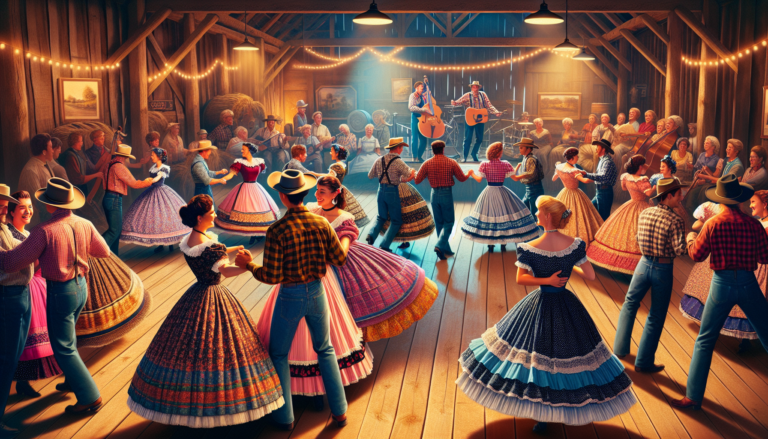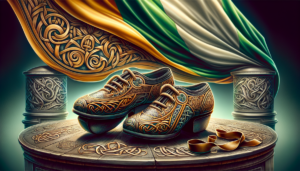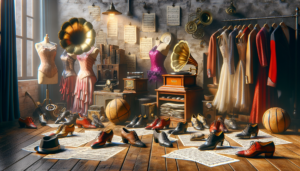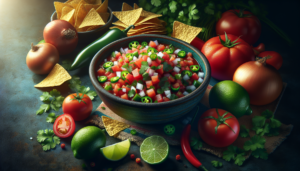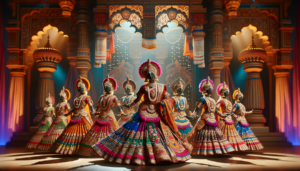Introduction to Square Dance
Square dance is a joyful and lively traditional dance that has been enjoyed by communities across the United States for generations. This unique dance style brings people together in a spirit of fun, friendship, and cultural appreciation. Square dance is known for its structured movements, lively music, and the strong sense of community it fosters among participants.
What is Square Dance?
Square dance is a traditional folk dance that involves four couples arranged in a square formation. Each couple faces the center of the square, and the dance is led by a “caller” who announces the various movements and steps for the dancers to follow. The caller’s role is crucial, as they guide the dancers through the intricate patterns and keep the energy level high throughout the dance.
The basic structure of a square dance involves the couples moving in synchronization, following the caller’s instructions. The dancers may be asked to promenade, allemande, do-si-do, or swing their partners, among other moves. These movements are combined in endless variations, ensuring that no two square dances are exactly alike.
History of Square Dance
The origins of square dance can be traced back to several European folk dance traditions, including English country dance and French quadrilles. As European settlers arrived in North America, they brought these dance styles with them, which eventually evolved into the square dance we know today.
Square dance gained popularity in the United States during the 19th and early 20th centuries, particularly in rural communities where it served as a primary form of entertainment and socialization. As the country became more urbanized, square dance began to decline in popularity, but it experienced a resurgence in the 1930s and 1940s thanks to the efforts of influential callers and leaders like Lloyd “Pappy” Shaw.
Today, square dance remains a beloved tradition in many parts of the United States, with active communities and clubs dedicated to preserving and promoting this unique dance form.
Square Dance Music and Attire
The Role of Music in Square Dance
Music plays a vital role in square dance, setting the tempo and mood for the dancers. Traditional square dance music often features lively fiddle tunes, banjos, and guitars, creating an upbeat and energetic atmosphere. The caller works closely with the musicians, matching their calls to the rhythm and phrasing of the music.
Some popular traditional square dance tunes include:
- “Turkey in the Straw”
- “Soldier’s Joy”
- “Buffalo Gals”
- “The Girl I Left Behind Me”
In addition to these classic tunes, modern square dance music may incorporate elements of country, western, and even pop music, appealing to a wide range of musical tastes.
Traditional Square Dance Attire
One of the most recognizable aspects of square dance is the traditional attire worn by dancers. While dress codes have relaxed over the years, many dancers still enjoy donning the classic square dance outfits.
For women, the traditional square dance outfit consists of a full, flared skirt paired with a blouse or bodice. The skirts are often adorned with petticoats, adding volume and movement as the dancers twirl and spin. Women may also wear bloomers or ruffled pantalettes under their skirts for added coverage and style.
Men’s traditional square dance attire includes western-style shirts, often with embroidery or decorative details, paired with jeans or slacks. Some men may also wear bolo ties, cowboy boots, and even cowboy hats to complete the look.
While these traditional outfits are still popular, many modern square dance clubs have adopted more relaxed dress codes, allowing dancers to wear comfortable, casual clothing that allows for ease of movement.
Learning Square Dance
Square Dance Lessons and Tutorials
For those interested in learning square dance, there are numerous resources available. Many square dance clubs offer beginner lessons, providing a welcoming environment for new dancers to learn the basic steps and terminology.
In addition to in-person lessons, there are also online tutorials and instructional videos that can help beginners learn the fundamentals of square dance. Websites like Cyberpoint’s Square Dance Demonstration on YouTube provide valuable visual aids and step-by-step instructions for those looking to learn at their own pace.
Some square dance organizations also offer weekend workshops and intensive courses, allowing dancers to immerse themselves in the world of square dance and rapidly improve their skills.
Understanding Square Dance Calls
One of the most important aspects of learning square dance is becoming familiar with the various calls used by the caller to direct the dancers. These calls range from simple commands like “promenade” and “allemande left” to more complex sequences that require precise timing and coordination.
Here are some examples of common square dance calls:
| Call | Description |
|---|---|
| Promenade | Dancers join hands with their partners and walk counterclockwise around the square. |
| Allemande Left | Dancers join left hands with their corner and walk around each other. |
| Right and Left Grand | Dancers weave in and out, alternating right and left hands with the other dancers until they meet their partner. |
| Do-Si-Do | Dancers pass around each other back-to-back, then step backwards to their original positions. |
As dancers become more experienced, they will learn to recognize and respond to a wide variety of calls, allowing them to participate in more advanced and challenging square dances.
Square Dance Events and Community
Popular Square Dance Events
Square dance events bring together dancers from far and wide to celebrate their shared love of this traditional dance form. These events range from local club dances and regional festivals to national conventions that attract thousands of dancers.
One notable example is the National Square Dance Convention, held annually in different cities across the United States. This multi-day event features hundreds of callers, live music, workshops, and social activities, drawing square dance enthusiasts from around the world.
Other popular square dance events include:
- State and regional festivals
- Camping and retreat weekends
- Charity and fundraising dances
- Holiday-themed dances (e.g., Halloween, Christmas)
These events provide opportunities for dancers to socialize, learn from experienced callers, and immerse themselves in the vibrant square dance community.
The Square Dance Community
One of the most rewarding aspects of square dance is the strong sense of community it fosters. Square dance clubs and events bring together people from all walks of life, united by their shared passion for this joyful and engaging dance form.
Many dancers form lasting friendships through their involvement in square dance, and the supportive and welcoming nature of the community is often cited as one of the primary reasons people continue to participate.
In addition to the social benefits, square dance clubs and organizations often engage in community service and outreach efforts. This can include performing at nursing homes, schools, and community events, as well as raising funds for local charities and causes.
The square dance community also plays a vital role in preserving and promoting this traditional dance form, ensuring that it continues to thrive for generations to come.
Benefits of Square Dance
Physical Benefits
Square dance provides a fun and engaging way to stay physically active, offering numerous health benefits for participants of all ages. The constant movement and lively pace of square dance can:
- Improve cardiovascular health
- Strengthen bones and muscles
- Enhance balance and coordination
- Boost energy levels and stamina
The social nature of square dance also encourages participants to stay committed to regular physical activity, as they look forward to the camaraderie and enjoyment of dancing with friends.
Social and Mental Benefits
In addition to the physical benefits, square dance offers a range of social and mental benefits that contribute to overall well-being. Participating in square dance can:
- Reduce stress and promote relaxation
- Provide opportunities for social interaction and forming new friendships
- Enhance mental agility and memory through learning and executing complex dance sequences
- Boost self-confidence and self-esteem
- Foster a sense of belonging and community
The inclusive and supportive nature of the square dance community ensures that dancers of all skill levels and backgrounds feel welcomed and valued, creating a positive and uplifting atmosphere that promotes overall well-being.
In conclusion, square dance is a joyful and enriching tradition that offers a wide range of benefits for those who participate. From the lively music and engaging dance steps to the strong sense of community and social connection, square dance provides a unique and rewarding experience that continues to captivate dancers across the United States. Whether you’re a seasoned dancer or a curious beginner, exploring the world of square dance is sure to bring joy, friendship, and a greater appreciation for this timeless cultural tradition.

